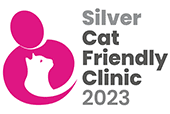Rottweilers originate from Germany and Italy & were originally used for herding and as guard dogs. The Roman army had dogs to protect the soldiers & herds and in Rottweil in Germany they interbred with more local dogs to form a larger dog. They continued to be used for herding & breeding but numbers went into decline during the 1800’s. They started a comeback in the early 20th century & are now a popular breed often used for working.
Rottweilers are a big powerful muscular dog with a broad & deep chest. They have many of the traits associated with GSD’s – trainable, courageous & devoted to their owners. They are loyal and protective of their owners and willing to fight fiercely if they are threatened. Despite their size & powerful frame, they can be good around children and other pets. The best way to ensure this is to start early socialisation and training as a puppy.
Most of a dogs behavioural traits are formed in their first few weeks and it is important at this early stage to introduce the Rottie to all the sights and sounds of your home. Children need to be taught to respect the puppy & vice versa. When buying a puppy, check to see if the breeder has started their socialisation. Are they a well known, recognised breeder of Rotties that has invested time with the pups. Rottie’s can sense how a person is feeling, if they are afraid, irritated, angry, calm.
As with the GSD, they have been used extensively by the police and military because of their obedience & trainability. They need a lot of exercise and will not want to be kept cooped up in doors for long periods alone. They will make an ideal companion for a run through the forest or a leisurely bike ride. They are also slow to mature and up to two years is not unusual.
They live about 10 to 12 years and below we consider some of the commoner problems we see in Rottweilers. Obviously we can see many other problems with them but these are some of the ones they are susceptible to
Skin problems:
Allergic skin disease including food allergies and atopy (environmental allergies)
Canine acne
Gastrointestinal disease
Parvovirus infected- a fatal disease we routinely vaccinate against
Inflammatory bowel disease causing diarrhoea
Musculoskeletal conditions
Hip and Elbow dysplasia
Cranial Cruciate Ligament rupture
Osteosarcoma- bone cancer
Cancers of the toes
Neurological Problems
Meningitis
Various polyneuropathy- diseases affecting multiple nerves in the body that affect the ability to walk and move
Eye Problems
Entropion- curling in of eyelid
Distichiasis- extra eyelashes
Inherited eye problems including cataracts, retinal atrophy and retinal dysplasia
Rottweilers can make a wonderful family pet, but whilst they look cute & cuddly as a puppy, it must be remembered that they will reach 100lb in weight and be more powerful than any family member. Training is essential, needs to be started at an early age and continue through its lifetime.





